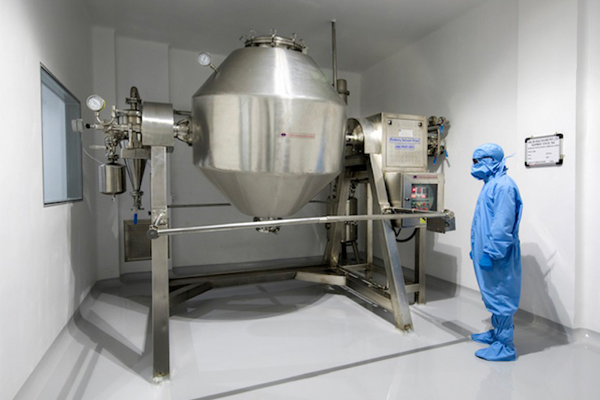WORKING
A rotocone vacuum dryer, particularly when manufactured in india, utilizes a combination of vacuum and gentle agitation to efficiently dry materials. It works by creating a vacuum inside the drying chamber, reducing the boiling point of moisture, and facilitating its evaporation. The cone-shaped chamber and rotating action ensure even heat distribution and mixing of the material, promoting rapid and uniform drying.
Batch Drying and Vacuum Creation: The material to be dried is loaded into the rotocone dryer as a batch. The dryer is then sealed, and a vacuum is created within the chamber using a vacuum pump.
HEAT TRANSFER AND MOISTURE EVAPORATION
Indirect Heating :
Heat is typically transferred to the material through a jacketed exterior wall using a heating medium like steam or hot oil.
Reduced Boiling Point :
The vacuum lowers the boiling point of the solvent or moisture within the material.
Evaporation :
As the material is warmed, moisture evaporates more easily due to the reduced boiling point and the vacuum.
GENTLE AGITATION AND UNIFORMITY
Rotary Motion :
The cone-shaped vessel is rotated slowly, ensuring a gentle tumbling action and preventing sticking or lumping.
Uniform Heat Distribution :
The rotating action and conical shape help to distribute heat evenly across the material, promoting uniform drying.
VACUUM AND VAPOR COLLECTION
Moisture Removal :
The evaporated moisture, now in a vapor state, is drawn away by the vacuum pump.
Vapor Condensation :
The vapor can be further condensed to recover the solvent if desired.
ADVANTAGES OF ROTOCONE VACUUM DRYERS
Efficient Drying :
The combination of vacuum and gentle agitation leads to faster and more uniform drying compared to traditional methods.
Low Temperature Drying :
Vacuum drying can be done at lower temperatures, making it suitable for heat-sensitive materials.
Solvent Recovery :
The vacuum system allows for the recovery of solvents, reducing environmental impact and costs.
CONSTRUCTION AND FUNCTION
Jacketed Shell :
The main body is a cylindrical shell with conical ends, typically made of stainless steel or other corrosion-resistant materials. The shell is jacketed, meaning it has a space between the inner and outer walls where a heating fluid (like steam or hot water) can circulate.
Rotating Cones :
The bottom and top cones are mounted on a shaft that allows them to rotate slowly (typically 5-10 RPM). This gentle tumbling action ensures uniform drying and reduces heat exposure to the material.
Vacuum Chamber :
The dryer is designed to create and maintain a vacuum inside the shell. This is achieved through a vacuum pump and sealing systems.
Optional Features :
Some RCVDs may include features like lump breakers to break up larger pieces of material, nitrogen purging for sensitive materials, and vacuum loading systems for efficient material transfer.
Material Loading :
The material to be dried is loaded into the dryer, usually through the top cone.
Vacuum Creation :
A vacuum pump is activated to draw out air and other gases from the chamber, lowering the pressure and reducing the boiling point of water or solvents.
Heating and Tumbling :
The heating fluid circulates through the jacket, providing gentle heat to the material. As the dryer rotates, the material tumbles and is exposed to the heated surface, promoting efficient evaporation of moisture.
Evaporation and Recovery :
The evaporated moisture is then drawn out of the chamber by the vacuum pump and can be condensed and recovered as a solvent.
Drying :
The vacuum environment and gentle heating ensure rapid drying without excessive temperature exposure.
Material Discharge :
Once dried, the material is discharged, often through the bottom cone, to complete the batch process.
